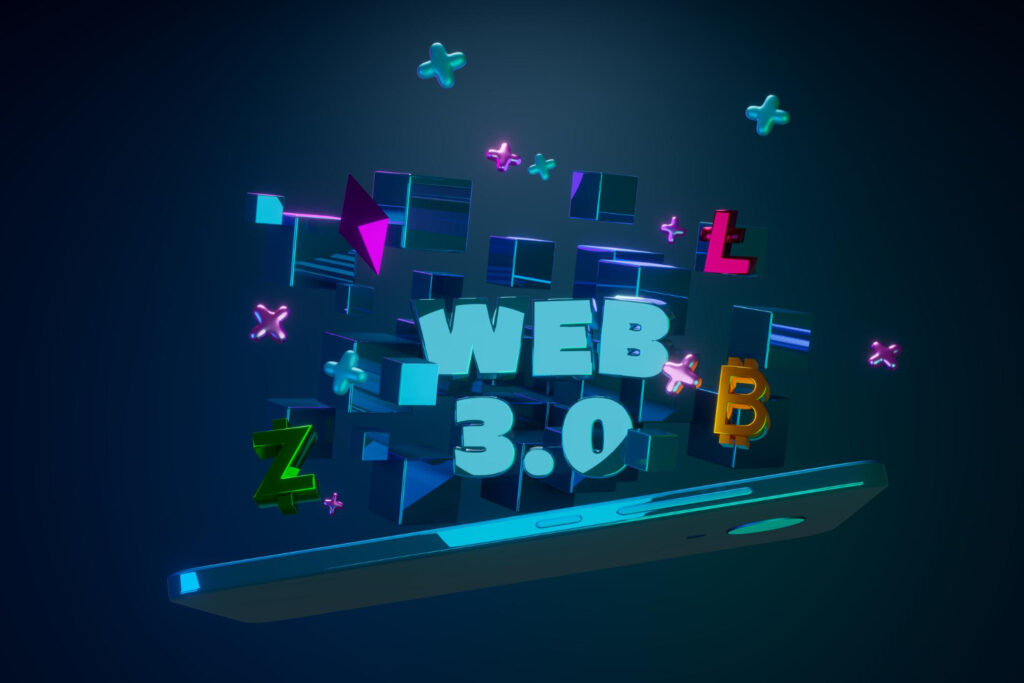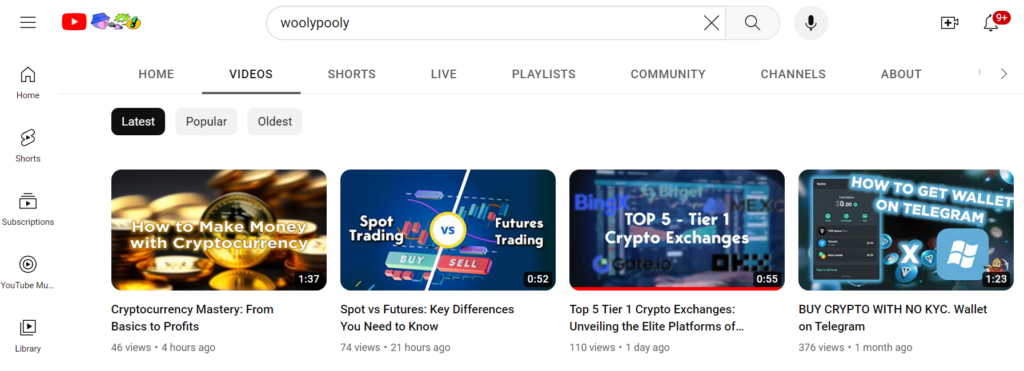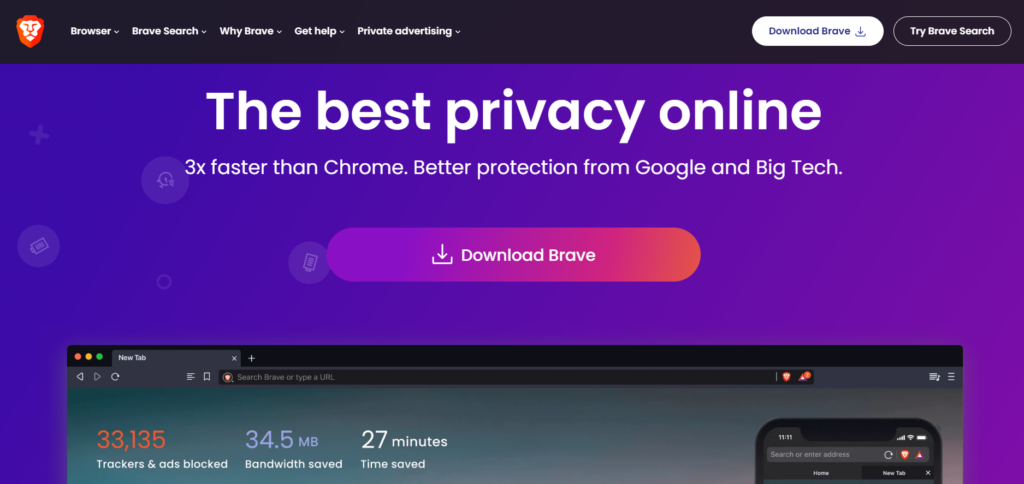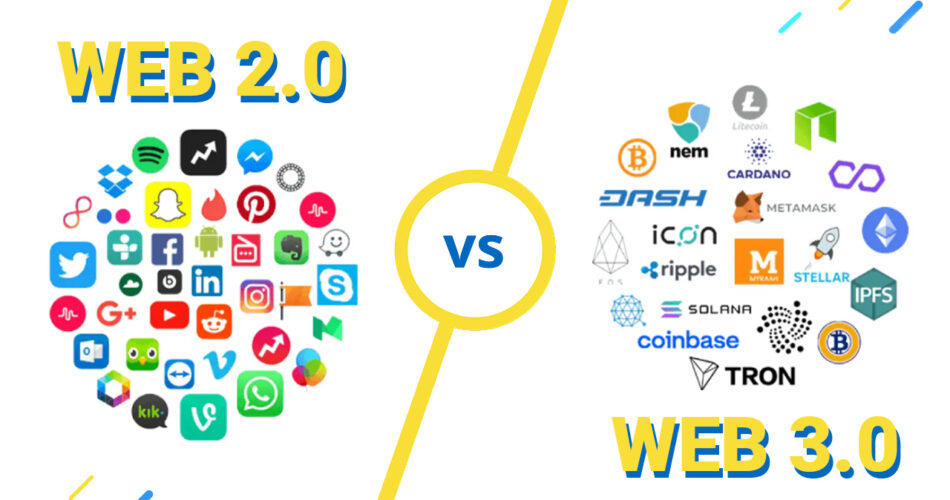The digital landscape is ever-evolving, and as we stand on the cusp of another monumental shift, the debate between Web 2.0 and Web 3.0 takes center stage. But what are these terms, and why are they causing such a stir in the tech community? Let’s dive in.
Table of Contents
Historical Context
The Dawn of the Digital Age: Web 1.0
In the late 1990s, the Internet was in its infancy. Known as Web 1.0, this era was characterized by static web pages that were primarily informational. Websites were simple, designed using basic HTML, and interactivity was minimal. There was no social media, no streaming platforms, and online transactions were a novelty. The content was created by a select few, and users were mostly passive consumers. Search engines like AltaVista and Yahoo! were the gatekeepers of online information.
Web 2.0: The Social Revolution
As the millennium turned, the Internet underwent a transformation. Web 2.0 marked the shift from static web pages to dynamic, user-generated content. Blogs, wikis, and social networking sites like Facebook and Twitter emerged, turning users into contributors. The line between content creators and consumers blurred. Platforms like YouTube allowed anyone with a camera to become a broadcaster. AJAX technology made web pages more responsive, enhancing user experience. This era saw the rise of the “share” culture, where information, videos, and images were freely shared across platforms. The power dynamics shifted, and users now had a voice and a platform.
Web 3.0: A Glimpse into the Future
The next phase in the Internet’s evolution is Web 3.0, often termed the “Semantic Web.” This era is characterized by machines understanding content like humans do, making web interactions more intuitive. Web 3.0 is not just about connecting information but about connecting knowledge. It’s an era where data is decentralized, and users have control over their personal information. Blockchain technology, the backbone of cryptocurrencies like Bitcoin, plays a pivotal role in this decentralization. Artificial intelligence and machine learning integrate into web platforms, offering personalized experiences based on user behavior and preferences. The Internet becomes more intelligent, adaptable, and personalized.
Key Characteristics of Web 2.0

User-Generated Content: The Rise of the Digital Citizen
Web 2.0 heralded the era where every user could also be a creator. Platforms like Blogger and WordPress democratized content creation, allowing anyone to set up a blog and share their thoughts. YouTube took this a step further, enabling users to upload videos and reach audiences worldwide. This shift meant that content was no longer the sole domain of professionals; the digital landscape was now shaped by its users, leading to a diverse and vibrant online ecosystem.
Social Media and Collaboration: Connecting the World
The advent of Web 2.0 saw the rise of social media giants like Facebook, Twitter, and LinkedIn. These platforms transformed how we communicate, allowing for real-time interactions across continents. They fostered communities based on interests, professions, and hobbies. Collaboration tools like Google Docs and Wikipedia enabled collective content creation and editing, emphasizing the power of community and shared knowledge. The world became smaller, and connections, both personal and professional, were just a click away.
Rich User Experiences: Beyond Static Pages
Web 2.0 wasn’t just about content; it was also about experience. With technologies like AJAX, websites became more interactive and responsive. Gone were the days of static pages; now, sites could update content in real-time without needing a full page reload. This led to the development of web applications that mirrored the functionality of desktop applications. Websites became more than informational portals; they transformed into dynamic platforms offering services, tools, and immersive experiences.
Monetization in Web 2.0: The Ad Revolution
As the web became more interactive and user-centric, businesses saw new opportunities for monetization. The rise of Google AdWords and AdSense allowed for targeted advertising, where ads were tailored to users’ online behaviors and preferences. Affiliate marketing became a lucrative venture for bloggers and content creators. E-commerce platforms like eBay and Amazon leveraged user reviews and recommendations, integrating user-generated content into their monetization strategies. The digital economy boomed, with Web 2.0 at its heart.
Key Characteristics of Web 3.0

Decentralization and Blockchain: Power to the People
Web 3.0 is often synonymous with the concept of a decentralized web. Unlike the centralized platforms of Web 2.0, where data and control reside with a few entities, Web 3.0 aims to distribute this control among its users. Blockchain technology is at the forefront of this shift. It offers a transparent, immutable ledger system where transactions and data are recorded across multiple nodes, ensuring security and reducing the risk of centralized control. This decentralization promises users more control over their data, potentially revolutionizing industries from finance to social media.
Semantic Web and AI: Understanding Beyond Keywords
Web 3.0 is envisioned as a semantic web where machines can understand the context and meaning of words, not just the words themselves. This means search engines and platforms could interpret user intent more accurately, delivering more relevant results and content. Artificial Intelligence (AI) and machine learning play crucial roles in this, as they enable platforms to learn from user behaviors, preferences, and interactions, making the web more adaptive and personalized.
Enhanced Security: A Fortified Digital Realm
With increasing concerns over data breaches and cyberattacks, Web 3.0 places a heightened emphasis on security. Decentralized identity systems are being explored, where users can control their personal data without relying on centralized entities. Cryptographic techniques, often associated with cryptocurrencies, are employed to ensure data integrity and user privacy. In Web 3.0, users can navigate with the assurance that their online footprint is protected.
Token Economies: Beyond Traditional Monetization
Web 3.0 introduces a shift in online monetization strategies. Instead of relying solely on advertising, the new web integrates token economies. These tokens, often built on blockchain systems, can represent anything from currency to assets to user privileges. Platforms like Ethereum have introduced smart contracts, allowing for automated, trustless transactions. This tokenization opens up new avenues for business models, including decentralized finance (DeFi) and decentralized autonomous organizations (DAOs), redefining value exchange on the web.
Web 2.0 vs Web 3.0: A Side-by-Side Comparison
| Feature 📜 | Web 2.0 🌐 | Web 3.0 🌌 |
|---|---|---|
| Data Ownership 🛡️ | Centralized platforms own data | Users control their data |
| Interactivity 💬 | Dynamic, user-driven content | Semantic, AI-driven interactions |
| Monetization 💰 | Ad-based revenue | Token & crypto economies |
| Technology 🔧 | AJAX, RSS | Blockchain, AI, Smart Contracts |
| Privacy & Security 🔒 | Basic encryption & security | Enhanced, decentralized security |
| User Role 👥 | Content consumers & creators | Active participants & stakeholders |
The transition from Web 2.0 to Web 3.0 represents a paradigm shift in how users interact with the digital realm. While Web 2.0 democratized content creation and fostered a dynamic, user-driven web, Web 3.0 is set to redefine user agency, offering enhanced control, privacy, and personalization. The integration of blockchain, AI, and token economies in Web 3.0 promises a more decentralized, secure, and intelligent web experience.
Pros and Cons of Web 2.0
| Pros of Web 2.0 🌟 | Cons of Web 2.0 ⛔ |
|---|---|
| User Engagement 🤝 | Data Privacy Concerns 🕵️ |
| Dynamic content creation 🎨 | Dependence on Ads for Revenue 📉 |
| Rise of Social Media 📣 | Centralized Control 🏢 |
| Collaborative Platforms 🤖 | Limited Personalization 🔄 |
Pros and Cons of Web 3.0
| Pros of Web 3.0 🌠 | Cons of Web 3.0 🚫 |
|---|---|
| Enhanced Data Privacy 🛡️ | Steeper Learning Curve 📚 |
| Decentralized Control 🌍 | Infrastructure Challenges 🏗️ |
| Token-based Economies 💸 | Uncertain Regulatory Landscape ⚖️ |
| Intelligent Interactions 🧠 | Initial Adoption Barriers 🚧 |
Implications for Users and Businesses

Opportunities and Challenges for Users
The shift to Web 3.0 brings a plethora of opportunities for users. With enhanced control over personal data, users can decide who accesses their information and how it’s used. This empowerment, however, comes with challenges. The decentralized nature of Web 3.0 might require users to be more proactive in managing their digital identities. Additionally, the need to understand new technologies, like blockchain and token economies, might pose a learning curve for many.
Key Takeaways for Users:
- Empowerment & Control: Web 3.0 offers users unprecedented control over their data and online interactions.
- Personalized Experiences: With AI and semantic understanding, users can expect more tailored online experiences.
- Learning & Adaptation: Users might need to familiarize themselves with new terminologies, technologies, and concepts inherent to Web 3.0.
How Businesses Can Adapt and Thrive in the Web 3.0 Era
For businesses, Web 3.0 presents both challenges and opportunities. The decentralized nature means traditional business models, especially those reliant on user data monetization, might need reevaluation. However, Web 3.0 also offers innovative monetization strategies, like token economies, that businesses can leverage. Moreover, with enhanced user trust and transparency, businesses can foster stronger customer relationships.
Key Considerations for Businesses:
- Rethinking Business Models: The shift from ad-based revenue to token economies might require businesses to innovate and adapt.
- Building Trust: With enhanced focus on data privacy and security, businesses can build and reinforce trust among their user base.
- Staying Ahead of the Curve: Continuous learning and adaptation are crucial. Businesses should invest in understanding and integrating Web 3.0 technologies to stay relevant and competitive.
Case Studies: Real-world Examples
Web 2.0 Pioneers

| Platform 🌐 | Description 📜 | Impact 🚀 |
|---|---|---|
| Facebook 📘 | Launched in 2004, Facebook revolutionized social networking by connecting people globally. | Became the world’s largest social media platform, influencing communication, business, and even politics. |
| YouTube 🎥 | Debuted in 2005, YouTube democratized video content creation and sharing. | Transformed entertainment, giving rise to a new breed of celebrities and content creators. |
| Twitter 🐦 | Introduced in 2006, Twitter offered a platform for real-time microblogging and discussions. | Became a vital tool for news dissemination, social movements, and global conversations. |
Web 3.0 Innovators

| Platform 🌐 | Description 📜 | Impact 🚀 |
|---|---|---|
| Ethereum ⛓️ | Launched in 2015, Ethereum introduced smart contracts and decentralized applications (DApps). | Paved the way for Decentralized Finance (DeFi) and Non-Fungible Tokens (NFTs), reshaping online transactions. |
| IPFS 🌐 | The InterPlanetary File System (IPFS) is a protocol designed to create a peer-to-peer method of storing and sharing hypermedia. | Aims to replace the traditional HTTP protocol, making the web faster, safer, and more open. |
| Brave Browser 🦁 | A web browser focused on privacy and security, integrating blockchain technology for ad tracking and rewards. | Challenges traditional online advertising models, offering users more control and privacy. |
These case studies provide a snapshot of the transformative platforms and technologies that have emerged in the Web 2.0 and Web 3.0 eras. They highlight the innovations and impacts that have shaped the digital landscape over the years.
The Future: Predictions and Trends
As the boundaries between Web 2.0 and Web 3.0 blur, we’re likely to witness the emergence of a hybrid web. This integrated platform will combine the user-centricity of Web 2.0 with the decentralization and intelligence of Web 3.0. Users can expect a seamless blend of dynamic content, personalized experiences, and enhanced control over their digital identities.
Emerging Technologies: Beyond the Known Horizons
The digital realm is ever-evolving, and several groundbreaking technologies are on the horizon:
Quantum Computing
With the potential to process vast amounts of data at unprecedented speeds, quantum computing could revolutionize data encryption, AI processing, and complex problem-solving.
Augmented Reality (AR) & Virtual Reality (VR)
These immersive technologies will further blur the lines between the physical and digital worlds, offering users richer, more interactive online experiences.
5G and Beyond
As network technologies advance, the speed, connectivity, and responsiveness of online platforms will reach new heights, enabling real-time interactions, IoT integrations, and more.
Decentralized Autonomous Organizations (DAOs)
These blockchain-based entities operate without centralized control, relying on smart contracts and community consensus. DAOs might redefine organizational structures and decision-making in the digital age.
Ethical Considerations and Digital Responsibility
As the web evolves, so do the ethical challenges it presents. Issues like data privacy, digital rights, and equitable access to online resources will take center stage. The future web will demand a balance between technological advancements and ethical considerations, ensuring that innovations benefit humanity as a whole.
Personalization vs. Privacy
The tug-of-war between personalized online experiences and user privacy will intensify. While AI and machine learning offer tailored interactions, they also raise concerns about data usage, surveillance, and consent. Striking the right balance will be crucial for platforms aiming to gain user trust.
Conclusion
The saga of “Web 2.0 vs Web 3.0” is not just a tale of technological advancements; it’s a narrative of human progress in the digital age. Web 2.0 democratized the online realm, giving a platform to voices worldwide and fostering a sense of global community. It reshaped how we communicate, do business, and even perceive the world around us. Yet, its centralized nature sparked debates about data control, privacy, and digital equity.
Now, as we transition into the era of Web 3.0, we’re on the brink of another monumental shift. This new web promises a decentralized, intelligent, and user-centric ecosystem. The “Web 2.0 vs Web 3.0” debate underscores a move from a web dominated by a few entities to one where control is returned to the users, powered by technologies like blockchain and AI.
However, this evolution is not without its challenges. As we navigate the waters of personalization, privacy, and ethical AI, the “Web 2.0 vs Web 3.0” discourse serves as a reminder of the responsibilities we hold as digital citizens.
In the grand tapestry of the web’s history, the “Web 2.0 vs Web 3.0” chapter is a testament to our relentless pursuit of a better, more equitable digital world. As we forge ahead, the possibilities are as vast as the digital universe itself.
FAQs
What is the main difference between Web 2.0 and Web 3.0?
Web 2.0 is centered around user-generated content and social media, while Web 3.0 focuses on decentralization, blockchain, and intelligent web interactions.
How will Web 3.0 impact businesses?
Web 3.0 will demand businesses to prioritize data privacy, embrace blockchain, and adapt to token-based economies.
Is Web 3.0 safer than Web 2.0?
Yes, Web 3.0 emphasizes enhanced security and user data protection, making it safer.


